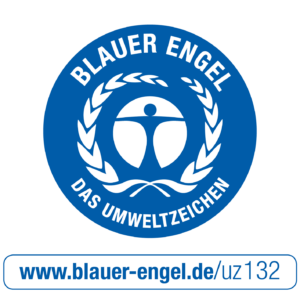Sustainability at OWA
Acting responsibly towards reduction of carbon footprint and improvement of indoor air quality
In today’s world, everything seems to eventually be driven down to a sound bite. Many topics boil down to right or wrong when the answer is more complex and constantly evolving. Sustainability especially is one example of a nuanced conversation with many solutions. Topics and practices that were valued even just several years are always changing based on new research and available information. One can look towards the U.S. Green Building Council’s LEED green building rating system as an example, which has gone through radical updates in 2009 (LEED 2009), then 2013 (LEEDv4) and most recently in 2019 (LEEDv4.1).
Today’s sustainability discussions focus on two primary topics: reducing our carbon footprint and improving indoor air quality. Many important stakeholders in the construction industry, such as Developers, General Contractors and Architects, have made ESG (Environmental, Social, and Governance) integral parts of their decision-making process, with similar guiding principles. “At DPR, we believe that we have an ethical responsibility to make our world a better place. Engrained in our culture is a commitment to being socially accountable to ourselves, our partners, our planet, and our communities,” says Cari Williams, Social Responsibility Lead at DPR Construction. Similar sentiments can be found on the websites of Turner Construction, Hines Development and HKS Inc. We all want a sustainable future, but what happens when two sustainable ideas pull in opposite directions?
Acoustical ceilings, which account for significant square footages of many buildings, are crucial in delivering pristine indoor air quality for building occupants with a reduced embodied carbon. However, many specifications today still revolve around recycled content percentage by weight. Recycled content is divided up into two categories: “pre-consumer” and “post-consumer.” “Pre-Consumer” is defined by UL as recycled content from “material that has never reached the end-use,” and only valued at ½ towards overall recycled content of a product. “Post-Consumer”, are finished goods at the end of their life which are recycled back for production of other materials. Post-Consumer is valued in full towards overall recycled content.
Mineral fiber manufactures reach high recycled content percentages primarily via the pre-consumer route. The bulk of this pre-consumer recycled content comes from the use of “slag wool” as the base ingredient of the tile. Blast-furnace slag is material created during the smelting of iron ore. Slag is separated from the iron ore in an intensive process and cooled down to form glassy, rock like material. This slag is then transported to mineral fiber production plant, where it is then melted down once again and fiberized to form the Slag Wool, which is then ultimately used to produce the finished ceiling tile. While this slag delivers a high pre-consumer recycled content, the amount of melting, heat and overall energy consumed during this process results in higher carbon emissions. The question of what we really value regarding sustainability again becomes complex.
At OWA made an ideological shift to produce ceilings to reduce our carbon footprint while delivering a product that could improve occupant health during use. In 1997, we began producing our Mineral Wool via pure, naturally sourced raw materials direct from the Odenwald Mountains outside our manufacturing plant. By producing with a mixture including dolomite and sand, we created a complete bio-soluble, bio-degradable Mineral Wool material, which is used as the base material in each one of our finished ceiling tiles. This production shift delivers up to 122% reduction in kg CO2 /SF during the manufacture of OWA ceiling tiles versus equivalent products on the market, an important development in reduced carbon footprint of our product.

The shift to these pure raw materials also helped to improve the quality of this mineral fiber, resulting in a more durable finished ceiling tile that could withstand abuse in the field without breaking or crumbling. This is evidenced in an ISO 4 Cleanroom rating on standard, smooth Octave tiles, which measures particle emissions from the tile itself. This ISO 4 rating is achieved on standard products with factory cut edges, resulting in ten times less particles emitted per cubic foot than traditional ISO 5 rated healthcare ceiling tiles, which requires a premium price. Additionally, the rich mineral fiber core in each one of OWA’s tiles allows 10x less air permeation than fiberglass tiles. This forms a tighter seal on the room to allow HVAC equipment to function properly while minimizing dust and dirt accumulation on the surface of the tile, all resulting in an improved indoor air quality.
OWA has made a commitment towards responsible production and with products that deliver a healthier indoor space. By shifting our formulations, we have been able to reduce our carbon footprint during manufacturing while delivering a higher quality product to the end user. Evidenced through some of our prestigious sustainability awards such as the Blue Angel Ecolabel and Cradle to Cradle Bronze Level, and further communicated through our HPD’s and EPD’s available online, we continue to make strides. As an organization, we needed to make a hard decision on sustainability. In doing so, we were able to deliver healthy products that are built to last.
